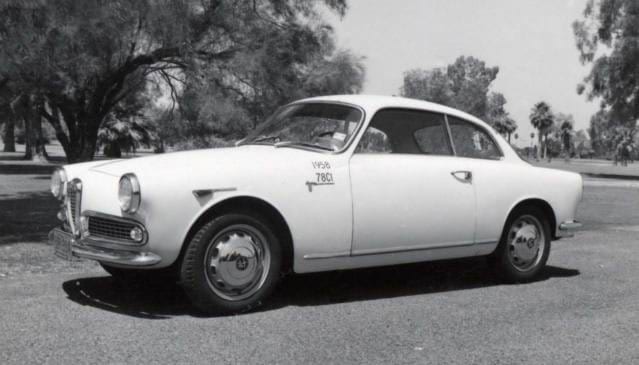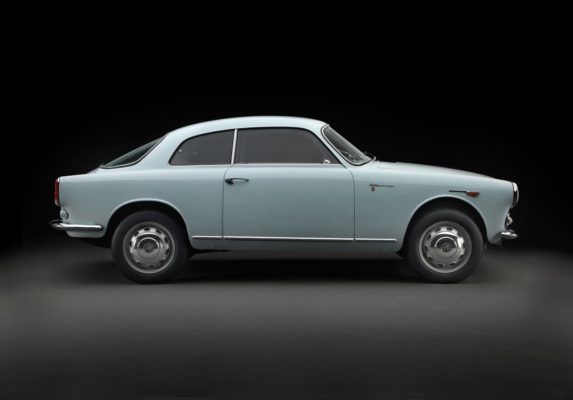Tech Specs
Four-cylinder in-line engine, double overhead camshafts 1290 cc, 90 hp at 6500 rpm.
Before/After
1958 Alfa Romeo


About the 1958 Alfa Romeo Giulietta Sprint Veloce
Alfa Romeo retired from Formula 1 racing as World Champion at the end of the 1951 season. Although a felicitous end to a Grand Prix competition career that had begun in 1924, many at the factory rued the decision. The most significant reason for the decision became apparent at the end of 1954: a brandnew production car and a brand-new policy for the factory.
The Giulietta Sprint was the first Alfa Romeo that, instead of a numerical designation, had a name, one it shared with the Italian actress Giulietta Masina, muse and wife of Federico Fellini, and star of his breakthrough film La Strada that had opened earlier that year. The coincidence, if it was that, was telling. Masina’s persona was winsome gamin with a dash of Charlie Chaplin. The Giulietta was a delectable small car with a talent to amuse. La Strada was both a critical smash and wildly popular. So was the Giulietta.
In the annals of the company, this new Alfa Romeo was a landmark car, bringing the factory into the ranks of volume producers, and more quickly than envisioned since for a good while Giulietta demand outpaced supply. Little wonder the car was so coveted. Under the hood of the perfectly proportioned Bertone-designed uni-body was an engine of the most advanced high performance specification and all the clever engineering necessary for an automobile that involves the driver as much as a thoroughbred does its equestrian master. Long had Alfa Romeo been known as a “driver’s” car. The Giulietta carried on the tradition.
Naturally there were those Alfa drivers desirous of a more potent Giulietta, capable of exploiting its competition potential. Alfa obliged them with a high performance version in 1956 called the Sprint Veloce with a higher compression engine offering two twin-choke Weber carburetors, an amazing 90 hp and the standing quarter in 17.1 seconds.
In its various guises, the Giulietta had a production life of 11 years, but its legacy endured for decades at Alfa Romeo. Did this sprightly little car have any faults? Of course. It rusted badly and some critics called the interior configuration a “two plus nearly two.”
Photos – Peter Harholdt










